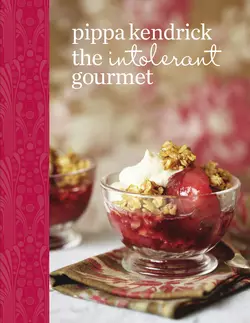The Intolerant Gourmet: Free-from Recipes for Everyone

Pippa Kendrick
Тип: электронная книга
Жанр: Кулинария
Язык: на английском языке
Стоимость: 191.96 ₽
Статус: В продаже
Издательство: HarperCollins
Дата публикации: 28.04.2024
Отзывы: Пока нет Добавить отзыв
О книге: Food writer and cook Pippa Kendrick revolutionises allergy-friendly food with an inspired collection of delicious recipes for everyone to make, share and enjoy – and just happen to be free from wheat, gluten, yeast, egg, dairy and soya.The Intolerant Gourmet is a cookbook that will appeal to everyone; from those that want delicious food but suffer food allergy or intolerance to those who simply want great home cooking that can be served to all their friends and family no matter what they can or can’t eat.Each year, more and more people are diagnosed with food intolerance or find that avoiding certain products makes them feel better, happier, and more energetic; but for too long they’ve been forced to have separate meals or go without. Pippa puts an end to this with a cookbook that celebrates great food to be savoured by one and all, and won’t leave anyone feeling unsatisfied.In this beautifully illustrated book – packed with stunning photographs – you’ll find 120 doable recipes. All are entirely free from wheat, yeast, egg and dairy and almost all entirely free from gluten; but, most importantly, all are delicious.Pippa offers simple soups, snacks and salads, satisfying main courses including inspired versions of what you might find on a restaurant menu, tasty vegetarian meals and plenty of indulgent desserts and cakes. She also includes tried-and-tested basic recipes for breads, pastry and biscuits.Pippa’s fresh, inclusive approach to ‘free from’ cooking and her engaging personality shine through to make the recipe book that food intolerants have been crying out for: a beautiful modern-day cookery bible to cherish and share, and to turn to again and again.Recipes include:Smoked Chicken, Sweet Potato and Lentil SaladFalafel with Parsley and Tomato SaladLamb Korma with Lemon and Cashew RiceTomato Pesto-filled Pork TenderloinLamb Tagine with Dates and PeppersSpaghetti with Roasted Aubergine, Thyme and Chilli SauceMasala Roast Chicken and SquashVegetable LasagneBakewell TartTreacle Tart with CustardJam TartsWhite Soda BreadShortcrust Pastry